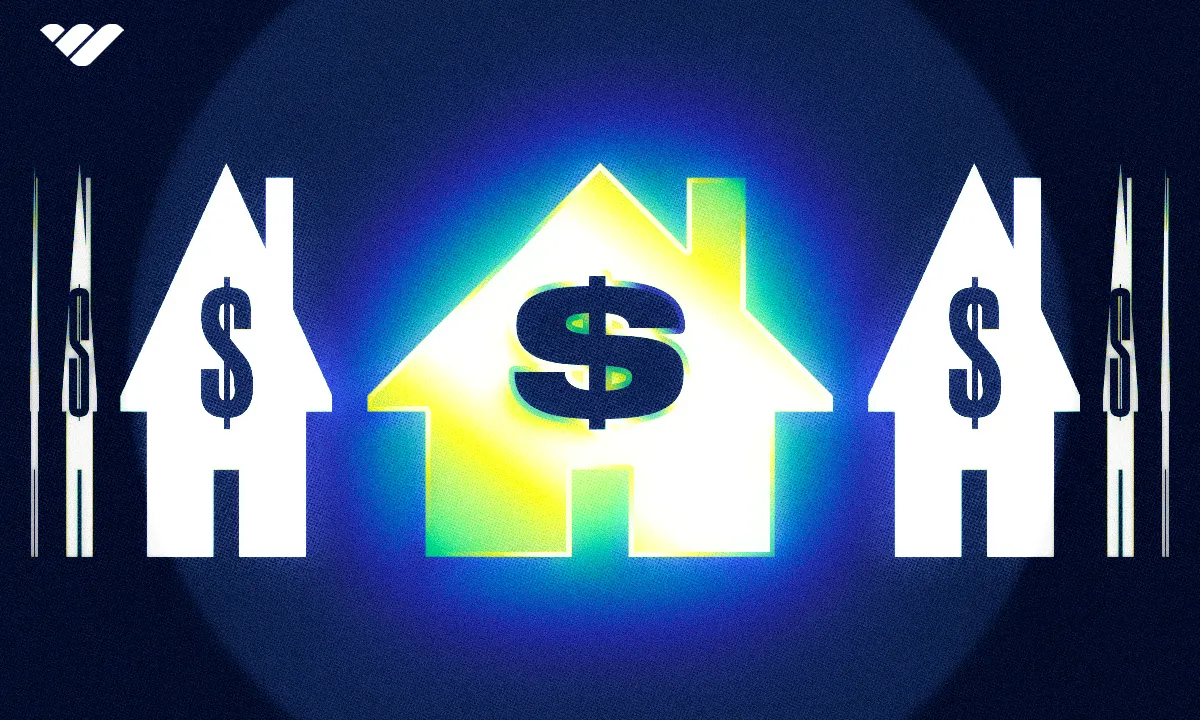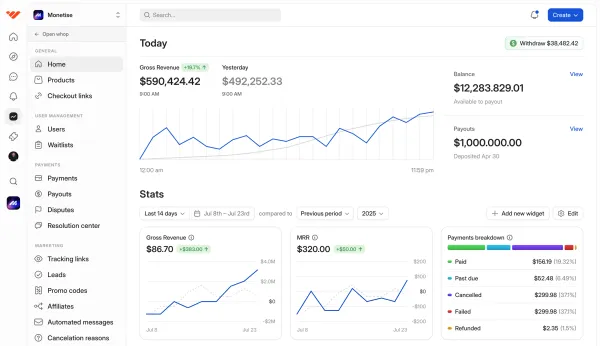Discover 60 of the top side hustles you can do from home in 2026. From freelance gigs to passive income ideas, find flexible ways to boost your earnings without leaving the house.
Key takeaways
- Half of Gen Z plan to leave their 9-5 jobs for side hustles.
- 93% of working Americans already run a side hustle.
- Pet sitting can earn $20-$100 daily with zero startup costs.
- Freelance writing pays $20-$150 per hour from home.
- AI training offers $15-$50 hourly for basic computer skills.
There are plenty of work-from-home opportunities you can start today, including freelance writing, online tutoring, pet sitting, and more.
Millions of Americans are turning to side hustles — not just for pocket change, but for real financial freedom.
Newsflash: half of Gen Z plan to leave their 9–5 for side hustles, and 93% of working Americans are already running one.
Keep reading for 60 proven remote income opportunities with startup costs, earning potential, and how to get started.
The best side hustles from home
Top five remote side hustles
| Side hustle | Skills required | Startup cost | Earning potential |
|---|---|---|---|
| Affiliate marketing | Content creation, niche knowledge | Free | $50–$10,000+/month |
| Pet sitting | Basic pet care, communication | Free | $20–$100/day |
| Selling sports picks | Sports analysis, trend spotting | $10+ | Varies — up to $1,000s/month |
| Freelance writing | Writing, research, meeting deadlines | Free | $20–$150/hour |
| Subtitling | Attention to detail, timing, accuracy | Free–$100 | $10–$30/hour |
Beginner-friendly work-from-home side hustles
These WFH side hustles are beginner-friendly, flexible, and perfect for getting your foot in the door while you learn as you go.
Want to start making money from home without years of training or a fancy resume? Start here.
1. Take paid surveys for pocket change

One of the easiest ways to make money online? Online surveys.
The hourly rate for this sort of job isn't very high, and the income isn't guaranteed, but it's something anyone can do, and there are no commitments or contracts.
Some survey platforms, such as Attapoll, even have a mobile app so you can fill out surveys during your daily commute, turning time that would usually be spent doomscrolling into a chance to earn a little extra income.
- What you need: A phone or computer, internet access, and time to answer questionnaires
- How much it costs to start: Free
- Earning potential: Roughly $0.50-$3 per survey
2. Earn up to $60/test by testing websites and apps
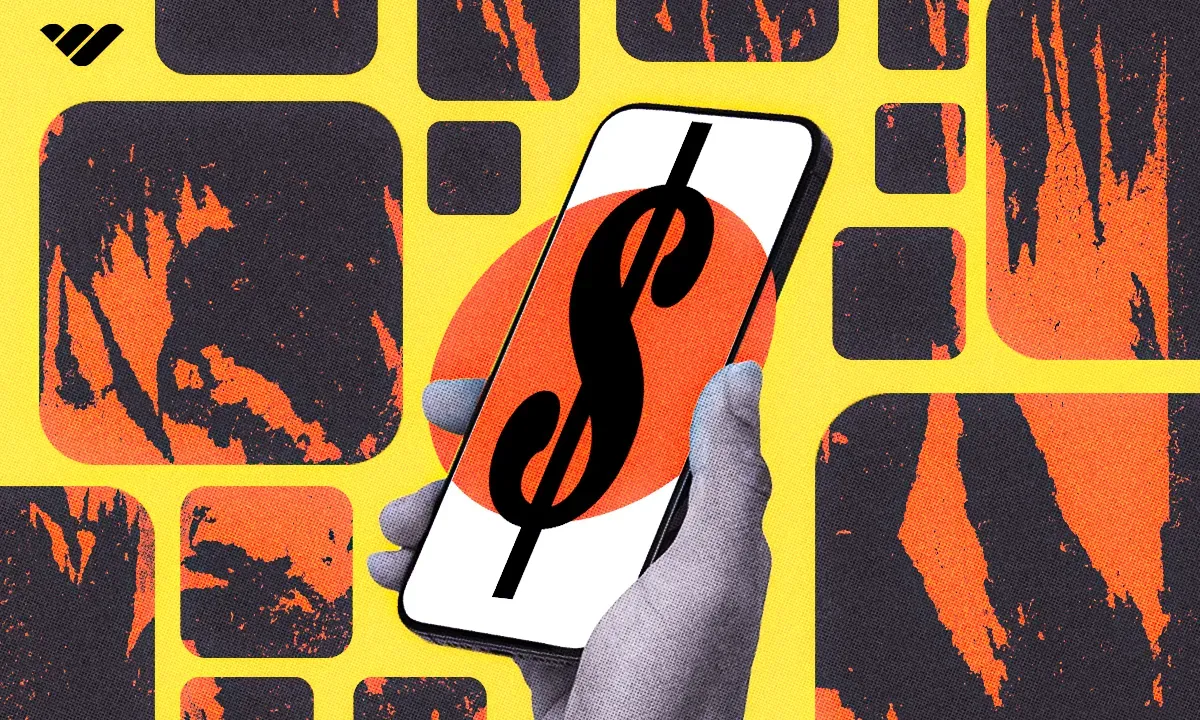
Market research firms recruit people to test apps, games, and websites, which is an epic opportunity for techheads.
But income from this sort of side hustle isn't guaranteed. Sometimes you'll have lots of jobs to choose from. Other times, you'll log on to the same platforms and find nothing available.
Still, worth a shot!
- What you need: A phone or computer with a mic, good internet, and the ability to give feedback on websites or apps
- How much it costs to start: Free
- Earning potential: $10-$60 per test, depending on length and complexity
3. Make money creating UGC (User-generated content)
When you're scrolling TikTok and Instagram, know it or not, you're likely watching UGC.
UGC creators make first-person content that usually shows a person using a product or service.
Companies want (need) real content from creators who can promote their products without looking like a hard sell.
UGC isn't about pretty faces — it's about trust, connection, and results.
— Whop UGC creator
You don’t need a massive following to get started: your creativity is what counts.
You could create unboxing videos for beauty brands, lifestyle content for fitness companies, or anything else.
And you can start for free. As you create more content, you can earn anywhere from a few hundred bucks to thousands, depending on the brand deals you land.
- What you need: A phone, creativity, and an understanding of what types of content resonate with audiences
- How much it costs to start: Free
- Earning potential: $50-$2,000 a month, depending on brand deals and content type
Start your UGC career with Whop
4. Earn hundreds of dollars playing with pets
Love animals? Hate traditional work? This one's for you.
Pet owners hate sending their furry friends to a kennel when they go on holiday – they'd rather work with an independent pet sitter they trust.
For those already working from home, pet sitting fits nicely with your lifestyle.
To start as a pet sitter, check for any training and insurance requirements, and, if renting, that your rental agreement allows you to run a business from home (and animals to be within the property).
- What you need: A phone to find jobs, basic knowledge of pet care, and a safe space for animals (or the ability to travel)
- How much it costs to start: Free
- Earning potential: $20-$100 a day (or more), depending on your location and services
5. Become a delivery driver and make money on your own time
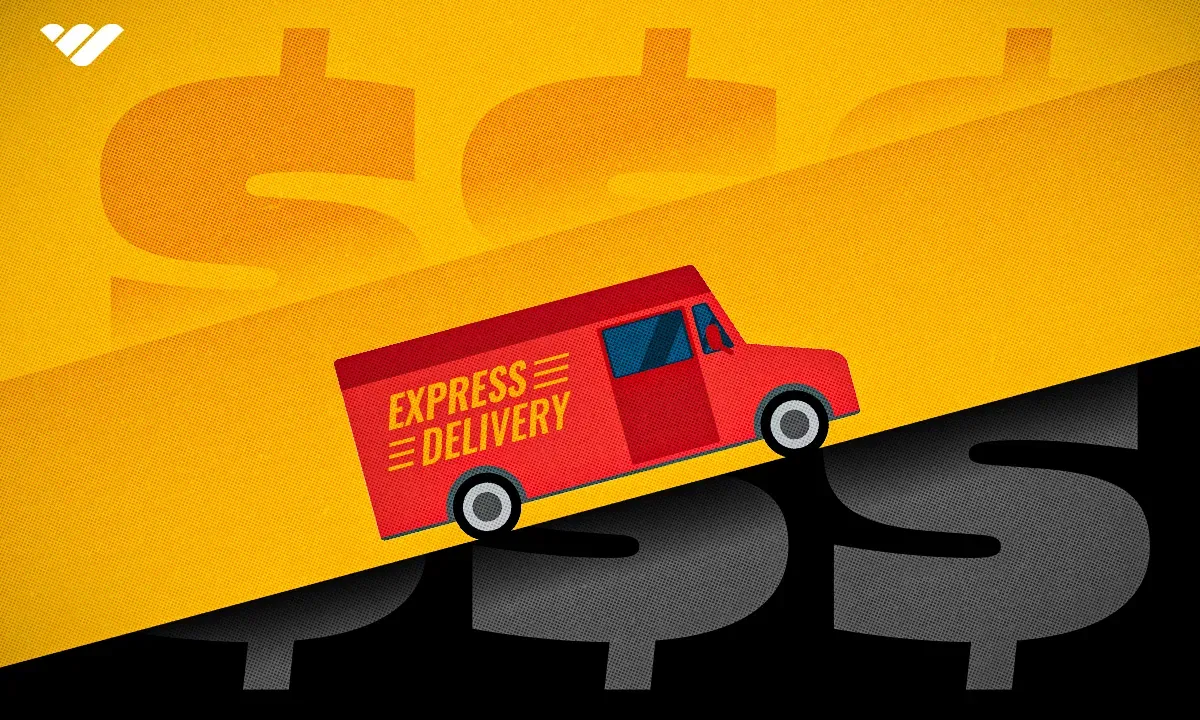
Okay, so you can’t do this one from your couch, but you don’t have to clock in at an office either.
Delivering for apps like Uber Eats and DoorDash can be a solid way to earn extra cash, especially if you're between jobs or need something fast and flexible.
Work when you want, log off when you’re done. And yes, tips can seriously boost your income.
Platforms like Uber Eats, DoorDash, and Fiverr have enabled millions to earn a living on their own terms, choosing when, where, and how much they work.
— Jun-Seo Kim, writer for UCL Economics & Finance Society (EFS)
But here’s the catch: competition is high. During peak hours, you're up against a crowd of other drivers chasing the same orders.
Still, for quick cash and freedom over your schedule? It’s an option.
- What you need: A phone, a mode of transport (bike, scooter, or car), and time flexibility
- How much it costs to start: Free to low cost
- Earning potential: $15-$30 an hour
6. Review products for extra cash
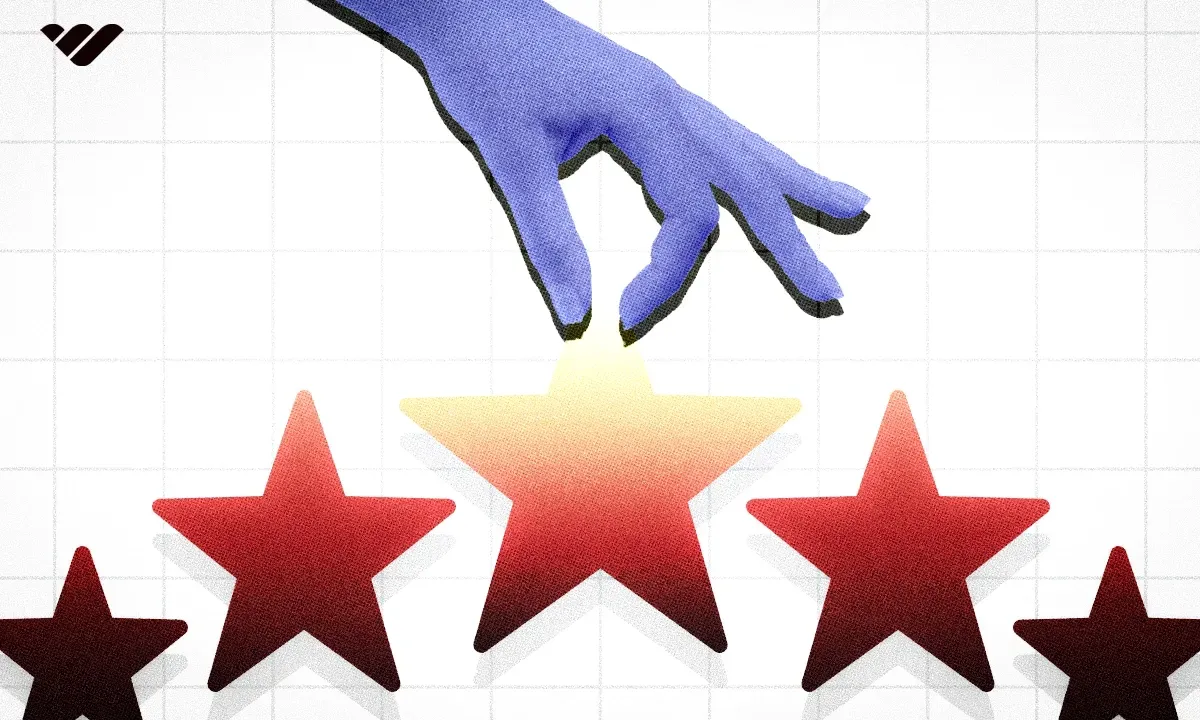
Reviewing products is a WFH role that offers flexibility and lets you engage with the latest products and trends – all while earning extra money.
As a product reviewer, you’ll need to provide honest, thoughtful feedback and maintain high standards for your content.
Usually, you get paid in gift cards and free products. However, paid product review gigs exist, and can pay hundreds per month if you build a niche and combine reviews with UGC.
- What you need: A phone or laptop and the ability to give honest feedback
- How much it costs to start: Free
- Earning potential: Most basic product review opportunities (like try-it-for-free programs) won’t pay cash, just free products.
7. Make income as a live chat agent

Companies and agencies are always hiring live chat agents who provide technical support or product-related assistance.
While some of these companies have fixed hours, others pay per problem resolved and allow you to log on at any time to pick up queries.
This kind of flexible work is ideal for a digital nomad. You can relax on the beach during the day and pick up a few queries from your hotel room to top up your bank balance.
- What you need: A computer or tablet, reliable internet, and solid written communication skills
- How much it costs to start: Free
- Earning potential: $10-$25 an hour (depending on experience and responsibilities)
8. Tutor students for easy cash
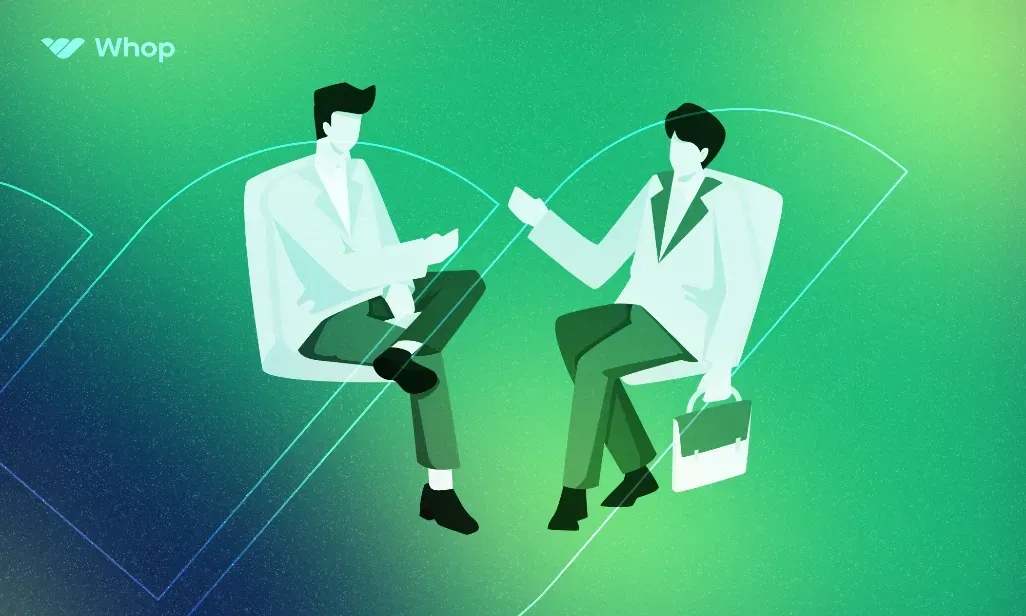
Excelled at maths in college? Speak a few languages? Know third-grade science?
Tutor for cash. Apps (like MyTutor) connect you with learners ready to pay, making the marketing and payment side of the process relatively simple.
You can also skip the middlemen and run your tutoring business independently online, with access to live video software and a way to take payments.
Tutoring is such a rewarding experience, sharing your knowledge, and helping others to further their knowledge and progress.
— Liam Hindson, tutor and blogger at TeachTutti
- What you need: Good knowledge of a subject, a phone or computer, and communication skills
- How much it costs to start: Free
- Earning potential: $20-$80 (on average) an hour, depending on subject, specialization, and level taught
Whop is the easiest platform for tutoring. Take calendar bookings, host live video calls, upload worksheets, and chat with students as a class or 1:1. We take care of payments and disputes, you focus on selling.
9. Earn money with an extra language
As a translator, you make sure that communication across different languages is accurate, which can be crucial for various industries, such as legal, technical, and business.
If you're a freelance translator, you can also offer proofreading services and earn extra money.
— Karina Egle, PR specialist at Whop
Your clients are seeking error-free, high-quality translations, so it pays to have good attention to detail and familiarity with specific industry terminology.
- What you need: Fluency in at least two languages, attention to detail, and a way to share or deliver files (email, cloud, etc.)
- How much it costs to start: Free
- Earning potential: Experienced translators can make $25-$60 an hour
10. Get paid to clip video content
Already watching videos online? May as well make money.
Clipping is just repurposing creator content (stream highlights, podcast moments, or music video snippets) into short-form videos for TikTok, Reels, or Shorts.
Creators want more eyeballs on their stuff, and they'll pay you to help them grow – no brand deals, no sales, and no experience needed.
Get the content (or make your own), turn it into scroll-stopping clips, post to your socials, and get paid based on views. Some creators even hand you ready-to-edit material so you don’t have to hunt for it.
The key to success in clipping is having a system. Post three clips a day every day without fail — and don't give up when you don't see results.
— Content clipper from Whop
- What you need: A phone or computer with basic editing software (like CapCut)
- How much it costs to start: Free
- Earning potential: Payouts average $0.30 to $3.00 per 1K views
Join Whop Clips to see tutorials, connect with other clippers, and get notified of new clipping opportunities.
11. Find, buy, and resell goods for profit
"We're buying up all the stocks so it sells out. Therefore, supply and demand comes into effect so collectors are really wanting these boxes and they're willing to pay three to five X the prices."
-Flip Flip on Whop
20.1% of young digital earners make their money trading new or vintage clothes online, i.e., reselling is the most common digital side hustle.
But the key to actually making money from reselling? Finding the right products to flip.
Some of the most popular categories today include vintage clothing, electronics, collectibles, and even everyday household goods.
Reselling can be a lucrative side hustle, but reselling success often depends on your ability to spot trends and understand market demand.
Like any business, it requires effort and attention to detail to maximize profits and ensure customer satisfaction.
- What you need: Items to flip (from around the house, thrift shops, or bulk buys) and a phone to list and communicate
- How much it costs to start: Free to $100+
- Earning potential: $100-$1,000+ a month (depending on effort and margin)
12. Pocket up to $50/hr with AI training
AI training is about helping AI systems learn to be, well, better. You’ll be responsible for providing accurate data and feedback.
It’s simple but vital remote work (as anyone who has used GPT 3.0 will testify, sorry not sorry).
And it’s possible to get started without ‘experience’: a basic understanding of AI is really all you need.
Training AI isn’t going to make you a millionaire, but it's a steady and easy way to make money from home with some flexibility, and it can pay pretty well if you’re dedicated.
- What you need: Basic knowledge of AI (or willingness to learn), a computer, and an internet connection
- How much it costs to start: Free to ~$100 for training courses
- Earning potential: $15-$50 an hour, depending on project complexity
13. Make money on your time with remote closing
Remote closing is a form of sales where your focus is on sealing deals over Zoom, FaceTime, or phone calls.
Basically, you're the final step in a sales funnel, converting warm leads into paying customers.
It’s ideal if you have strong communication skills, a persuasive personality, and some sales training. But you also don’t need any experience.
Olivia was one of the first girls to land a client, she closed her second sales call for $6,000 paid in full.
— Alexis Seleste, remote closer and educator
Check out Alexis’ Whop community, Her Last Call, for everything you need to start making bank from remote closing.
- What you need: Sales skills, internet access, and a decent mic setup
- How much it costs to start: Free ($$ for training)
- Earning potential: $25-$2000 per closed deal or hourly rates up to $100+
Skill-based side hustles you can do from home
Making money from home often comes down to one thing — knowing how to turn what you’re good at into something people will pay for.
We have a university-age student who built what he knew. He built Fortnite Maps, and he sells 'em on a platform company called Map Academy. He's doing extremely well, like six figures.
— John Hill, VP of Story at Whop
Let's look at some ways you could make money with your skills.
14. Earn $30/hr subtitling videos
We spend so much time scrolling silently in meetings and on daily commutes that subtitles have become essential.
For coaches and educational creators, they need to be spot on – so auto-generated doesn't cut it.
To get started, you'll only need attention to detail and access to subtitling software.
You’ll transcribe spoken words into text and time them to fit the video. While it’s not a high-effort job, it can be consistent work if you build a good reputation.
Because of this company, because of the hard work I put in, I'm glad to say that I have helped my family so many times financially.
— Kira, freelancer subtitler for Rev
- What you need: Attention to detail, a computer, and subtitling/transcription software
- How much it costs to start: Free to $100 for tools and software
- Earning potential: $10-$30 an hour (depending on experience and speed)
15. Find paid proofreading gigs and earn up to $45/hr

A straightforward (and remote) side hustle perfect for writers and people with an eye for detail.
Create your professional online presence using platforms like LinkedIn and X to find clients and showcase your work.
While no formal qualifications are needed, familiarity with various writing styles and strong attention to detail are key to landing work.
- What you need: Good grammar, an eye for detail, and a laptop or tablet
- How much it costs to start: Free
- Earning potential: $10-$45 an hour (roughly), based on experience and workload
16. Flex your organizational skills as a virtual assistant
Another slept-on wfh side hustle is virtual assistance. Many virtual assistants do the job as their main source of income.
I get to help people, I get flexible hours and I get to work from home.
— Matthieu Ratrimoson, virtual assitant
But you don't have to do this full-time.
Some clients are looking for someone who can do a few hours of administrative work a week, making starting your own VA business an ideal side hustle.
- What you need: Organizational and communication skills, and a laptop or phone to manage tasks remotely
- How much it costs to start: Free
- Earning potential: $15-$50 an hour, depending on the services offered
17. Offer digital decluttering services
Digital decluttering is a service to assist people and teams who are overwhelmed with organizational tasks.
You assist people by cleaning up their Google Drive, inbox, desktop folders, and task management systems, enabling more efficiency.
It’s a great service to market toward freelancers, remote teams, or business owners juggling too much.
- What you need: Organization skills, patience, and a computer
- How much it costs to start: Free
- Earning potential: $20-$75/hour or packages from $50-$500
18. Make money editing videos
We asked an experienced video editor to share how you can start making money with video content, even if you don’t have any clients yet.
His advice? Start by creating short-form videos. Look at what’s trending, replicate the style, and you’ll quickly learn what performs well.
Once you build momentum, opportunities (and clients) tend to follow.
You don't even need a full studio setup for this. All you need is a quiet room, a decent USB microphone, something like the Blue Yeti, and a free recording software like Audacity.
That's enough to get started and produce solid audio.
— Experienced voice actor
The best part about starting to edit videos as a side hustle is that you don't have to buy expensive software - you can work just as good with free video editing tools like CapCut and DaVinci Resolve.
- What you need: Video editing skills, a computer with software (Premiere Pro, Final Cut), and a portfolio
- How much it costs to start: Free to $300 for software
- Earning potential: $20-$100 an hour or $500-$5,000 a project, on average
19. Earn up to $500/gig with voiceover work
"Voice acting is one of the most overlooked but powerful side hustles out there and you can get started right from home.
You can work with YouTube channels, animation shorts, learning modules, audio books, guided meditations, even training data sets for AI voices, the list goes on and on and on."
— Experienced voice actor
You could be creating voice recordings for ads, YouTube shorts, tutorials, and anything in between.
All you need is a decent microphone, one that plugs into your computer or phone.
With apps like Fiverr or Voices.com, you can offer voiceover services directly from your phone, recording everything on the go.
You could make anything from $10 to over $100 per project, depending on the length of the piece.
- What you need: A quiet space to record, a decent mic, and good speaking ability
- How much it costs to start: Free to $100 for a mic and basic editing software
- Earning potential: $50-$500 per gig, depending on script length and client
20. Make up to $500/project with resume writing
You don’t have to be a career guru to help people land jobs.
If you’ve got a way with words and understand what makes a resume or LinkedIn profile stand out, resume writing can be a surprisingly lucrative side hustle.
Many people struggle with self-promotion and will happily pay for help.
You can also niche down: helping tech professionals, creatives, or students—and charge more as you build credibility.
- What you need: Writing skills, some knowledge of hiring practices, and examples of your work
- How much it costs to start: Free to ~$100 (if you invest in tools or a portfolio website)
- Earning potential: $50–$500 per resume
21. Narrate audiobooks for up to $500/PFH
If you love reading, then narrating audiobooks is a work-from-home hustle that you could enjoy.
Authors and publishers are always looking for audiobook narrators on platforms like Voices.com. You don't need to learn any new skills; it's about having an engaging voice and cadence.
Plus, all you need is a quiet room and a decent microphone to get started.
- What you need: A clear speaking voice, a microphone, and basic editing knowledge
- How much it costs to start: $0-$500 (depending on if you need a mic or editing software)
- Earning potential: $50-$500 per finished hour (PFH) of audio
22. Make money online as a ghostwriter

As a ghostwriter, you can make money writing by creating content for others to publish under their names, from books to LinkedIn posts.
You’ll be able to leverage your writing skills while maintaining anonymity. And it can become a lucrative opportunity, once you get a few clients on board.
You can also build your confidence and open doors to other writing opportunities, but you do need some writing experience and skill to compete in this gig.
- What you need: Writing skills, the ability to work behind the scenes, and good communication with clients
- How much it costs to start: Free
- Earning potential: $20-$150 an hour (depending on the project and experience)
23. Earn up to $5k/project with technical writing
Technical writing is a side hustle that needs a great understanding of the specific technical concept you'll be writing about.
While the term usually refers to writing about software or apps these days, it also includes work like creating the little manuals you get when you buy a new appliance.
At its core, technical writing simply boils down to 'explaining complex stuff in a simple way that everyone can understand.'
- What you need: Computer, writing skills, and knowledge of technical subjects
- How much it costs to start: Free
- Earning potential: $30-$75 an hour or $500-$5,000 per project
24. Offer online styling services for cash
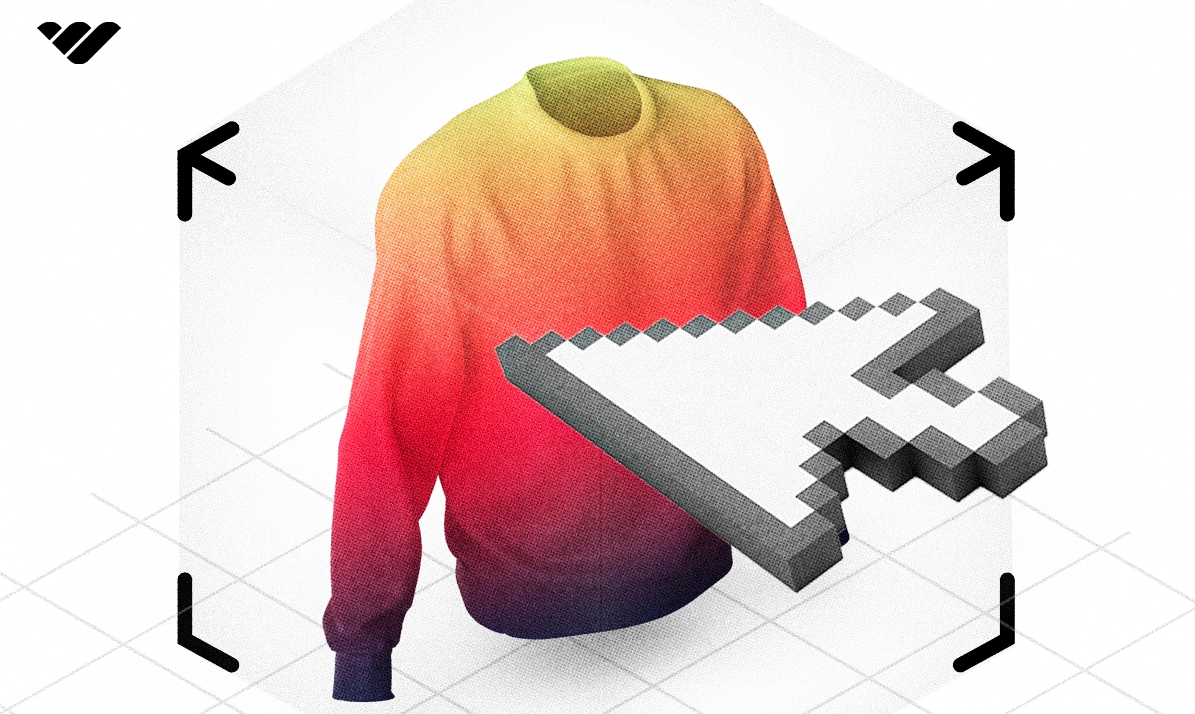
If you know fashion, you can offer online styling services. More than 80% of the US population shops online, so it makes sense.
Plus, many big retailers already have personal shoppers and stylists working with clients digitally, so the demand is there.
All you need is a social media presence to show your experience, and a platform to host live styling sessions.
To boost your income, offer follow-up packs after consultations with digital downloads, including tips and recommendations.
- What you need: Styling expertise, a way to communicate with clients, and potentially an online portfolio
- How much it costs to start: Free to $100 for any platform hosting or marketing
- Earning potential: $20-$100 an hour, depending on services offered and client base
You can host all of this with Whop. Set up your whop, add the 'content' app to showcase your work, the 'courses' app to share your top styling tips, and the video calls app to chat with your clients.
25. Manage online communities and earn up to $50/hr
"One question I get a lot is if it's worth becoming a community manager in 2026. And the answer is easily yes. A great community manager is basically heart of the business."
-east from Whop
Managing online communities is another easy side hustle that pretty much anyone can do with internet access at home.
Online communities are everywhere, and they’re growing like crazy. Even back in 2022, 76% of internet users participated in an online community.
But online communities can become volatile. From spammy content to bullying and even NSFW harassment, they require a moderator to ensure they remain safe and courteous.
As a moderator/manager, clients pay you to create, nurture, and grow digital communities around brands, products, or interests.
- What you need: Computer, communication skills, and community-building experience
- How much it costs to start: Free
- Earning potential: $15-$50 an hour
26. Start personal fitness training for up to $150/hr
Fitness isn’t something people can just wing. Sure, it might help your body and mind, but you need real experience to properly plan it out.
Depending on the level of expertise you have in fitness, bodybuilding, and even nutrition, you can provide personal fitness training to people of all ages.
You can also create your online fitness community. The ways to make money here are pretty endless.
You can create a lot of different revenue streams based on what those clients need — face to face, online, and purely fitness programming.
— Personal trainer, Danni, from Jetts Gym
- What you need: Fitness expertise, certifications, and a way to connect with clients (online platform or in person)
- How much it costs to start: Free to $100, depending on whether you invest in paid marketing
- Earning potential: $30-$150 an hour (depending on marketing efforts, experience, and client base)
27. Earn up to $5k/month with online event planning

Webinars, virtual conferences, internal company events, and even workshops, many brands now outsource online event logistics to freelancers.
Your job could include coordinating speakers, setting up Zoom or Hopin, designing slide decks, creating a run-of-show, or managing RSVPs.
No specific experience is required to land gigs, but strong communication and time management skills are gonna be crucial. Event software knowledge helps, too – think Eventbrite, Notion, Google Workspace, and StreamYard.
Pitch your services on freelancing platforms and professional networks like LinkedIn.
You could reach out to Whop creators who frequently run events and offer to take some of the weight off their shoulders, too.
- What you need: Planning skills, communication, and software fluency
- How much it costs to start: $0-$200
- Earning potential: $300-$5,000 per event, depending on scope
Digital product side gigs
Sell once, earn forever. These digital product gigs let you create something once — from templates to courses — and keep making money every time someone hits “buy.”
28. Make $$$ with affiliate marketing
Watch this video and find out why AB thinks that affiliate marketing and Content Rewards are the best ways to make money
Let's say I have a cousin who wants to learn how to sell with TikTok shop. I can click on a whop, scroll to the bottom of the page, and add the affiliate reward to my dashboard.
Then, I copy my affiliate link, send to my cousin, friend, family member, and receive that reward straight into my Whop account.
- AB, Whop
Affiliate marketing’s been around forever, and it's still a great way to make money.
And no, you don’t actually need a big following to get started.
Most people begin with referral codes, product links, or “share with a friend” rewards. At the top end, it turns into five-figure affiliate brand deals.
Start small: pick a niche you actually care about, post content that solves real problems (think “best tools for freelancers” or “apps that pay you”), and include your link.
The more trust you build, the better you convert.
- What you need: A phone and a platform to promote products (like your social media accounts)
- How much it costs to start: Free
- Earning potential: Affiliates can make anywhere from $50 to $10,000 monthly, depending on their traffic and niche
Join Whop Affiliates and get access to free tutorials, top affiliate offers, and more.
29. Sell niche data sets and make up to $300/set
Selling niche data sets might sound technical, but it's surprisingly beginner-friendly.
If you’ve ever built a spreadsheet to organize product prices, save influencer contacts, or even track trending keywords, then you're already sitting on something people will pay for.
All you have to do is a bit of research (manual or using scraping tools), then package the data up into a neat file.
Examples of data sets that sell well: Influencer or podcast contact lists, local service directories, and product research spreadsheets for resellers.
- What you need: A laptop, Google Sheets or Excel, and an idea for a niche with demand
- How much it costs to start: Free to ~$100, depending on tools or time-saving software
- Earning potential: $20–$300 per data set, depending on the topic and level of detail
30. Sell PLR products

These are digital products (think ebooks, courses, or templates) that have been pre-created by somebody else and that you can resell as your own. Say what?!
With PLR digital products, you skip the annoying process of creating and instead focus on selling (through social media, your website, Whop, Etsy, you name it).
Easy? Check. Little upfront investment? Check. Ability to generate a steady income? Check!
- What you need: PLR content (ebooks, planners), basic editing, and a way to market it
- How much it costs to start: $20-$200 (depending on the content bundle)
- Earning potential: $50-$2,000 monthly, depending on sales and niche
31. Sell downloadable templates for $5-$100/sale
If you've got an eye for design and some basic Canva skills, then you can sell downloadable templates.
Choose a niche and make templates to fit it. For example, if you're a stay-at-home mom, then you know what you need to stay organized every day. Create downloadable templates for budgeting, journaling, baby feeding trackers, or meal planners.
Free tools like Canva make it incredibly easy to design templates. Then, once your digital products are made, you can sell them on platforms like Whop.
- What you need: A free Canva account and an understanding of what people need
- How much it costs to start: Free to $50, depending on tools or marketplaces used
- Earning potential: $5–$100 per sale (for bundled templates), with potential to grow into thousands of dollars in passive income a month
32. Sell sports tips and picks
Sports betting is huge, and so is the demand for smart, data-backed predictions.
If you’re great at breaking down stats, spotting patterns, and predicting player or team performance, this could be your lane.
Start by building a presence on social media where you share your picks, insights, and commentary. Once you’ve built trust and a following, you can monetize by offering premium picks, selling subscriptions, or creating a paid community through a whop.
Sports betting in APAC is about to be off the charts.
- Bear, Whop Sports
The highest earners in our sports betting communities make thousands per month.
- What you need: A phone or computer, access to betting platforms, and solid risk awareness
- How much it costs to start: As little as $10
- Earning potential: Varies, to be honest. Sports betting is high risk and high variance
33. Sell digital coloring books for passive income
Digital coloring books are an easy way to make money online without needing tons of experience or upfront cash, especially if you’re the artsy type.
You create fun, relaxing coloring-in pages using free or cheap apps like Procreate or Canva, then sell them as downloadable PDFs on Etsy, Whop, or your own site.
People love these because they’re easy stress busters and perfect for screen-free downtime, so the demand is there, and social media has only boosted their sales further.
Plus, once you design the pages, you can sell them over and over, no extra work needed.
- What you need: Design skills, illustration software, and a place to sell
- How much it costs to start: Free to a couple hundred for tools and software
- Earning potential: $100-$2,000+ monthly, depending on audience and marketing
34. Sell digital meal plans for thousands of dollars a month

Meal planning isn’t just a life hack—it’s a sellable skill. If you’re naturally organized and love curating recipes, you can turn that into a profitable digital product.
Digital meal plans are especially popular with busy professionals, families, and people following specific diets like keto, vegan, or low-FODMAP.
So, there's the opportunity to go wide and cater to a whole range of diets, or niche down and focus on one part of the market.
- What you need: Strong organization skills, basic design software, and knowledge of your target audience’s needs
- How much it costs to start: Free to ~$100, depending on design tools or marketplace fees
- Earning potential: $20–$1,000+ per month depending on pricing, niche, and marketing
Templates made in Notion, Canva, or Google Sheets can be sold across marketplaces like Etsy and Whop.
35. Create and sell nutrition plans
We've already looked at meal plans, but this is a little more niche: nutrition guidance.
If you have a background in health, wellness, or just a strong understanding of food and how it fuels the body, you can turn that knowledge into a side income.
Custom nutrition guides, macro breakdowns, or digital products like recipe books for specific dietary needs (think high-protein, gut-friendly, or hormone-supportive) are in demand.
Plus, if you’re certified to offer nutritional advice, you can also offer one-on-one consultations or personalised plans at a premium rate.
- What you need: Nutrition knowledge, writing/design tools, and a platform to distribute your products or services
- How much it costs to start: Free to ~$100 depending on tools and certifications
- Earning potential: $50–$1,500+ per month depending on your niche, pricing, and audience size
36. Create passive income by publishing ebooks
Today, anyone can write an ebook and sell it on a digital download platform or as a print-on-demand product.
I have an Instagram reel or a TikTok relative to the information of the book, and then within the caption, I will have a call to action to purchase this book.
— Jeremie Lander, ebook author
Self-publishing has a low barrier to entry – you only need to write the content and save it as a PDF at the most basic level.
However, it's typically the authors who have the most success are the ones who work with editors, proofreaders, and graphic designers to assemble a professional-looking product and then invest in marketing it.
- What you need: Writing skills, an ebook idea, and tools to format and publish (like Amazon KDP or other platforms)
- How much it costs to start: Free to $200 for editing and cover design
- Earning potential: $50-$2,000 a month, depending on sales and niche
37. Sell online courses and reach hundreds of thousands of dollars a month
Online courses: create it once, sell it to an unlimited audience.
The demand for online courses just keeps on growing (seriously, it’s insane), with the e-learning market expected to grow to $740.46 billion in 2032.
Once the course is uploaded, you can sell it repeatedly, generating a semi-passive income. And we can teach you how to do it step-by-step, too.
- What you need: Expertise in a topic, a platform to host your course, and time to create the material
- How much it costs to start: Free to $500 for course hosting and promotion tools
- Earning potential: $200-$10,000 a month, depending on marketing, course popularity and pricing
Whop makes it easy to build courses with a simple, no-code builder.
Share text, video, and audio content with your learners – you can break a course down into modules and even include quizzes.
38. Create and monetize niche job boards
What are job boards? Basically, a central place online to host ads for remote jobs for women in tech, AI-specific freelance gigs, or Web3 and crypto content roles.
Businesses will pay to post, and users will return if the listings stay relevant.
You don’t need to code, either: just use job-board building platforms, or build a whop where you can have lists with both free and paid access, as well as a forum and chat for members.
Monetization comes from paid listings, newsletter sponsorships, or community access.
So, build an audience through social media or SEO, offer value with curated, high-quality listings, and watch your income climb.
- What you need: Knowledge, curation, and a website builder
- How much it costs to start: Free to $100 for startup costs
- Earning potential: $500-$10,000 per month once established
39. Create browser extensions to sell
Building an extension takes some technical skill, but once it’s created, it can be a passive income stream.
Browser extensions are simply tools that enhance a user’s internet browser experience – think ad blockers, password managers, interactive games, or productivity boosters.
You can monetize through ads, premium features, or even sell it to a bigger company.
- What you need: Coding skills (HTML, CSS, JavaScript) and a unique idea
- How much it costs to start: Free to $500 for development tools and hosting
- Earning potential: $100-$5,000 monthly through sales, ads, or donations
40. Offer API services and earn thousands of dollars a month

API integration specialists make different apps and software talk to each other, automating tasks and saving businesses tons of time.
You’ll need coding skills (think Python, JavaScript) and experience with tools like Zapier or Make (formerly Integromat).
This gig is perfect if you like problem-solving and customizing solutions. While not mandatory, courses or certifications on APIs boost your credibility and can help land better clients.
Projects can be quick one-offs or ongoing support contracts, giving you flexibility.
- What you need: Coding knowledge and experience with APIs
- How much it costs to start: Free to $200 for dev tools or courses
- Earning potential: $500-$5,000 (or more) per project
Creative and artistic home-based hustles
These creative side hustles that let you design, craft, and sell unique work — all without leaving your home studio.
41. Charge $500+/project with art and illustration
Creatives and artists have loads of side hustle opportunities, from designing book covers and merchandise to crafting custom commissions.
First thing you need to do is create a portfolio. Do not wait for perfect pieces. Upload your favourite work to Instagram, Pinterest, or any other platform that you're using.
— Karina Egle, digital artist and PR Specialist at Whop
A strong online presence is crucial for success, so actively showcase your portfolio on visual platforms like Instagram and Pinterest.
While artistic talent is key, building and maintaining an engaging online presence will help you connect with potential clients and secure projects.
- What you need: Artistic skills, digital tools (like a tablet and design software), and an online portfolio to showcase your work
- How much it costs to start: Free to $500 for equipment and software
- Earning potential: $50-$500 per project (or more!) Depends on experience, complexity and client type
42. Sell graphic design services
Graphic design work can range from designing company logos to crafting hand-drawn marketing campaigns and billboards.
Or, it might just mean crafting some snazzy social media posts for that brand you love. If you can create digital downloads, you can sell graphic design services.
The easiest way to get your first client is to network with people you already know. My first logo design projects were for an old university tutor who was launching his own portal for interns.
– Olivia Carr, Whop Content Writer
When you're just getting started, you may need to use freelance job boards to find customers.
As you gain experience, you likely have a steady stream of repeat customers and can rely on word-of-mouth marketing.
This cuts out the middleman and means more of the fee goes to you directly.
- What you need: Design skills, software (Photoshop, Illustrator), and a portfolio
- How much it costs to start: Free to $300 for software and portfolio-building
- Earning potential: Average of $25-$100 an hour or $300-$5,000 per project, based on experience
43. Have skills to share? Start a handmade crafts store
Online marketplaces like Etsy and Not on the Highstreet thrive with independent artists selling their handmade goods.
If you enjoy making jewelry, doing embroidery, or anything else artistic, you could turn that hobby into a scalable side gig.
When setting your prices, don't just price your work based on the cost of the materials - remember that your time is worth money, too.
If you sell digital crafts, like digital artwork or coloring sheets, your profitability can be much higher, as the cost to make these is much lower.
- What you need: Crafting supplies, a creative niche, and a way to list your products (e.g., website or marketplace)
- How much it costs to start: $50-$500, depending on the cost of materials and platform seller fees
- Earning potential: $100-$2,000 per month based on your sales volume, niche, and pricing
You can sell all sorts of digital files on Whop.
Content creation side hustles
Build an audience, share what you love, and turn views into income with these content-driven side hustles.
44. Write a blog and watch the cash come rolling in
Passionate about a unique hobby or niche interest? You should start a blog.
You may not get rich from a niche blog (though you could), but it can really help subsidize your hobby if you develop a decent following.
For example, travel bloggers embed affiliate links for travel price comparison sites and receive direct discounts on their adventures. Athletes sell ad space on their site to companies that make the kit they use in their training.
To make money as a blogger, you'll need to invest in web hosting and a domain name.
But if you post regularly and build up a following, you should be able to recoup those costs and start making a profit.
- What you need: A topic you’re passionate about, basic writing skills, and a way to publish (like a free website or email list)
- How much it costs to start: Free to start, up to $100 a year for domain and hosting if you go pro
- Earning potential: While nothing is guaranteed, top-earning bloggers can earn up to $10,000 a month through ads, affiliate links, or sponsorships
45. Make money online as a streamer
You don’t need any experience to become a streamer: just get over the initial nerves and start.
My top way of making money is through sponsors. To get sponsors you've got to have views, and you got to have a loyal community.
— Propernator, Twitch streamor
Gaming, art, music, or just vibing, platforms like Twitch, Whop, and YouTube make it easy to share your passions and build a loyal audience.
Pick a niche, invest in some gear (a decent mic and camera go a long way), and stick to a regular streaming schedule. Social media is your secret weapon here—use it to hype up your streams and grow your community.
As for making money? You’ve got options: viewer subscriptions, tips, brand sponsorships, and more.
- What you need: A phone, computer, or gaming console, an internet connection, and something engaging to share
- How much it costs to start: Free
- Earning potential: $0-$5,000 (or more) a month – through gifts, tips, and sponsorships
46. Start a podcast for unlimited earning potential
Brett Malinowski, Head of Marketing at Whop
"Podcasting is a great online business to start because not only can you make money from sponsors, you can also send traffic to your own digital products.
So any form of podcasting is very high leverage because if you make an episode you can post it on social media and get thousands of views month in and month out on autopilot"
-Brett Malinowski, Head of Marketing at Whop
With the global podcasting market reaching $31.6 billion, you may have wondered about starting your own podcast.
It’s a creative side hustle that you can also manage fully remotely. All you need is quality recording equipment, editing software, and a reliable internet connection.
The barrier to entry is low, making it clear that anyone with a passion and a plan can become a podcaster.
Podcast monetization options, including ads, sponsorships, listener donations, and subscription models, are pretty lucrative if you play your cards right.
- What you need: A phone or mic, something to talk about, and a quiet space to record
- How much it costs to start: Free to $100+
- Earning potential: $0-$5,000 monthly through ads, listener support, or brand deals
47. Trade stocks, make cash, & teach others (for more cash!)
Many of our Whop creators have built successful side hustles (and full-time businesses) from trading and teaching stocks.
Teaching others to trade can be another key revenue stream for those who excel.
You can create and sell online courses, write educational guides, or offer personalized coaching sessions.
This dual approach of trading and teaching combines hands-on experience with educational opportunities, making it a versatile and rewarding side hustle.
- What you need: Knowledge of the stock market, a brokerage account, and a teaching platform (like Whop).
- How much it costs to start: $100-$1,000 for trading capital.
- Earning potential: Varies widely, from small profits to 7 figures monthly for our leading community owners.
48. Develop apps for unlimited income
You don’t need to be a programming expert to build apps; there are plenty of tools like Appy Pie, Adalo, and Glide that allow you to create without writing code.
If you're building anything, make sure it solves your own problem. Nobody knows that problem as well as you do.
— Siya, Creator of GenPPT
Once your app is up and running, you can monetize it through in-app purchases, ads, or by charging a one-time fee.
While developing an app can take time and effort, it’s a scalable side job that has the potential to generate passive income long after it’s launched.
- What you need: Basic coding skills, AI and/or development tools, and a unique app idea
- How much it costs to start: $500-$5,000 for tools and marketing
- Earning potential: $1,000-$50,000 monthly, depending on app success and downloads
49. Try social media management
Can you name me a business that isn’t active on social media? Exactly.
Even that mom and pop store down the street has one now, likely run by some Gen Z student with an iPhone.
This hustle basically involves managing a brand or public figure’s online presence across social media platforms.
While SMM doesn’t require a formal degree, some experience and knowledge are essential.
- What you need: Social media skills, a computer, and content creation tools
- How much it costs to start: Free to $200 for tools and setup
- Earning potential: $15-$50 hourly, depending on client size and services
You can grow your skills through online resources on content creation, audience engagement, and analytics. Check out Whop Discover for trending courses and communities.
Ecommerce side hustles you can run remotely
Launch and grow an online store or marketplace you can manage from anywhere — no storefront required.
50. Take home upwards of $10k/month as a dropshipper
Dropshipping isn’t dead, especially with TikTok Shop and other social commerce platforms popping off.
Ronnie Jourv from Savage Ecom
Another business idea that operates 100% from the comfort of your home? Dropshipping. No inventory, no warehouse, no logistics.
However, dropshipping isn't a business to enter into lightly. It's super competitive, and if you choose the wrong supplier, issues with shipping or product quality could damage your reputation.
But if you do it right? It could make you a lot of money.
BTW: 2024 was the first year the industry surpassed $300 billion.
You ever wondered who's actually making money from dropshipping? It's not massive companies – it's people like you and me.
— Ronnie Jourv, Savage Ecom
- What you need: A product idea, basic design and branding skills, and a storefront to showcase it
- How much it costs to start: $100-$500 for setup, testing, and ads
- Earning potential: $0-$10,000+ a month, depending on marketing and margins
51. Try Amazon FBA and see how much you could earn
Amazon FBA is similar to dropshipping, but instead of finding suppliers, you source products yourself and send them to Amazon to handle inventory, customer shipping, returns, and pretty much everything else.
So, what do people sell with Amazon FBA? Well, everything. From household goods to beauty products and more.
The trick is to find products that are trending on Amazon at independent retailers, buy in bulk when they’re on sale, and sell via Amazon.
The gist of the business is simple: I resell established products like Dove or Starbucks – things that are likely already in your house.
I use a software called SellerAmp, it tells you if the product is selling higher on Amazon.
— Jas Green, 6-figure Amazon FBA seller
- What you need: Products to sell, an Amazon seller account, and time for research and prep
- How much it costs to start: $200-$2,000+ for first inventory, platform and seller fees, and shipping
- Earning potential: $500-$10,000 (or more) per month (depending on product demand and margins)
52. Make thousands of dollars a month with a paid community
Paid communities are among the best ways to leverage a loyal audience willing to pay for exclusive content or resources.
With Whop, you can create a paid community around anything you're passionate about: fitness, gaming, business, you name it.
There's an old saying, 'It's much easier to sell to somebody that you sold before than somebody new'.
This is why having a community is such a great thing, because these people will buy again and again and again.
— Jasen Hunt, CAD Instructor and community owner
No need for a huge following upfront – just a clear niche and value you can offer your members.
Once you’ve set up your community, it’s all about engagement and delivering on your promises.
- What you need: Internet connection, phone or laptop, and a community platform (like a whop)
- How much it costs to start: Free to ~$50 for marketing and basic setup
- Earning potential: $100–$5,000+/month based on membership size and engagement
Create your whop and start making money with an online community.
53. Earn thousands of dollars a month with subscription boxes
The key to curating successful subscription boxes is sourcing products around a specific theme – think Korean skincare, coffee from local roasters, D&D gear, or even ADHD productivity tools.
Source products wholesale (via Alibaba, Faire, or small brands), set up logistics (via ShipBob or Pirate Ship), and build a Shopify site (or join a subscription box platform like Cratejoy).
Success depends heavily on product quality, packaging, and retention. However, there’s money to be made: the subscription box market is projected to exceed $145 billion by 2032.
- What you need: Branding, storefront, suppliers, and a fulfillment system
- How much it costs to start: $200-$1,000+ for product samples and packaging
- Earning potential: $500-$10,000+ per month with enough subscribers
54. Aim for huge profits with website flipping
Spend a lot of time online? Why not try flipping websites?
Online marketplaces such as Flippa provide a platform for entrepreneurs to buy and sell blogs, affiliate marketing sites, web directories, and online stores.
The value of your platform is based on its traffic levels and recent earnings. If you've got good SEO and keyword research skills, you may be able to build a website that fetches a good price on the site.
P.S. Some domain flippers report an average annual return of 75% on their website investments, while others have sold single websites for substantial amounts like $178,000.
- What you need: A purchased domain/s, and the ability to increase a site's value (via SEO, design, or traffic)
- How much it costs to start: $100-$1,000 (for domain, hosting, and development)
- Earning potential: $500-$50,000 per flip (depending on website quality and buyer demand)43. Try social media management
Marketing and tech side gigs from home
Use your digital skills to help businesses grow, streamline systems, and make money without ever stepping into an office.
55. Earn six figures with software development
You don't have to be a 10X developer to be successful in the world of IT.
To be honest, if you've got any programming skills, you can likely use them to earn a second income.
A lot of people starting out may not have funds, but they have time. So I took the time to learn a skill – SaaS marketing.
— SaaStronaut, SaaS service builder
Look at the GitHub and GitLab pages of open-source software you use frequently, and see if there are any bugs people are offering bounties to fix.
Alternatively, set up a profile on a freelance website and sell your services. Some examples of in-demand programming skills include fixing issues with websites and writing scripts to perform repetitive data-processing tasks.
Or, build your own SaaS to really make money.
- What you need: Coding skills (in languages like Python, Java, etc.), a computer, and development tools (IDEs, frameworks)
- How much it costs to start: Free to $500+ (for courses or software)
- Earning potential: $25-$150 hourly, depending on experience and project complexity
56. Make regular income with remote tech support

If you have a knack for working with technology, then you can try virtual tech support as a way to make tech-industry money without changing out of your PJs.
Network issues, installing new software, tackling annoying system updates, and implementing new security measures are just some of the things you'll tackle as an on-call IT consultant.
You can even do things like helping people pick out the right components for their next PC build.
- What you need: Tech skills, internet connection, and a computer (or phone)
- How much it costs to start: Free
- Earning potential: $15-$50 an hour, on average
57. Make money with IT consulting/troubleshooting

IT consulting can come in many forms, from cybersecurity to basic technological troubleshooting. If you're an expert in any of those fields, you should consider providing consultancy services to businesses, creators, and more.
After you get started, you might want to consider developing an online presence to prove credibility and get more customers.
Platforms like Whop, LinkedIn, Reddit, Discord, or IT-related forums will play a big role in doing so.
- What you need: IT expertise, communication skills, and a computer.
- How much it costs to start: Free to $200 for any required tools.
- Earning potential: $30-$100 an hour, depending on experience and complexity.
58. Make $80+/hr with PPC services

Pay-per-click (PPC) advertising is all about creating and managing paid ads on platforms where businesses only pay when someone clicks.
As a PPC specialist, you handle everything from keyword research and writing killer ad copy to setting budgets and tracking results.
It’s a good gig if you’re into data, marketing, and tweaking campaigns – which means you probably have some experience in the field.
Since PPC can be tricky, many businesses outsource it, meaning steady work for you. The key? Analytical skills, creativity, and obsessing over ROI.
- What you need: PPC knowledge, ad skills, and marketing experience
- How much it costs to start: Free-$500 for courses and tools
- Earning potential: $25-$80+ per hour, or hundreds for monthly retainers
59. Sell SEO services
Mastering SEO means diving deep into data, strategy, and technical tweaks that push websites to the top of search results.
It’s not just about keywords: you’ll audit sites, optimize page speed, fix crawl errors, build smart backlinks, and craft content strategies that actually convert.
Using SEO you can drive traffic to any website and make a business more successful.
— Colin McDermott, Head of SEO at Whop
Tools like Ahrefs, SEMrush, and Google Search Console become your best friends. SEO is a constantly evolving game, so staying sharp on algorithm updates and emerging trends is a must.
This hustle is perfect if you love digging into analytics, crafting strategic roadmaps, and making a measurable impact on business growth.
- What you need: SEO skills, analytics understanding, and patience
- How much it costs to start: $0-$600 for courses and software subscriptions
- Earning potential: Usually $35-$100+ per hour, or you can negotiate monthly retainers
60. Try freelance web development
If you have experience in dev, you can offer custom site builds, ongoing maintenance, or set up online stores.
Getting started usually means diving into bootcamps or online courses, if you don't already know your sh*t.
Hint: Check out Whop Discover for education on web building, coding, and design.
To find clients, hit up freelance platforms, reach out to startups directly, or network for referrals. You can charge per project or hourly, depending on what fits your style.
Once you’ve got the hang of it, scaling up by creating templates or managing a team becomes an option.
- What you need: Coding skills, an eye for design, and a reliable computer
- How much it costs to start: Free-$1,000 for courses and software
- Earning potential: $30-$100+ per hour, depending on skill level
Start earning from home with Whop
Ready to turn your skills into income? You're in control here.
Courses, premium content, ebooks, community access, memberships, apps, templates, videos – the list goes on. If you can create it, you can sell it on Whop.
And unlike many other platforms, we don't charge a monthly fee to sell — we only make money when you make money.
Join Whop today and build a profitable online business from scratch – all on one easy platform.
Why online side hustles are better than offline side hustles
When it comes to making extra money, offline gigs like food delivery, rideshare, or manual work can bring in fast cash, but they come with hard limits.
You're trading time for money, which means if you're sick, burned out, or simply can't work that day, you don't earn.
Online income streams, on the other hand, are built to scale. Here's why they win in the long run:
- No commute: Everything happens on your phone or laptop. Whether you're on a beach, in your bedroom, or travelling, your business travels with you. Zero time lost getting to work.
- Scalable: You can create one digital product (a course, an ebook, a Notion template, whatever), and sell it thousands of times without doing more work. It's effort upfront, then income on autopilot.
- Automatable: With the right tools, you can automate customer onboarding, payments, email marketing, content scheduling, and more.
- Global reach: You're not limited to your suburb or city. You can sell to anyone, anywhere, at any time. That's 24/7 earning potential.
- Low overheads: No shipping fees, packaging supplies, or inventory headaches. Digital products eliminate most traditional business costs, so more money stays in your pocket.
Offline gigs are limited by your energy and hours in the day. Online opportunities give you the freedom to grow something sustainable, even while you sleep.
The numbers back it up: The global gig economy reached $582.2 billion in 2025 and is projected to grow to $2,178.4 billion by 2034.
Meanwhile, more than 70 million Americans are part of the gig economy, representing approximately 36% of the total workforce.
Creators on Whop are making over $7,300 per month, just from selling digital products. Some of our top creators make more than $250,000 per month.
FAQs
Have questions? We’ve got answers — open a question to read more.
What's the best side hustle to start?
It depends on your time, skills, and goals.
- Need quick cash? Try clipping, UGC, or affiliate marketing.
- Want something scalable and long-term? Digital products like courses or templates are your best bet.
How do I find legit side hustle jobs and opportunities?
Stick to trusted marketplaces like Whop, Fiverr, or Upwork.
Avoid listings that promise high pay for little work, ask for upfront fees, or involve mailing checks. If it sounds too good to be true, it usually is.
Can I start with no experience or money?
Yes. Many online hustles like affiliate marketing, surveys, or clipping require zero upfront costs and little experience.
Focus on low-risk, low-barrier options first.
What’s better, online or offline side hustles?
Online wins for most people. They scale faster, are easier to automate, and don't depend on location or weather.
Plus, you can work from anywhere and build income streams that pay you even when you’re offline.
How much time do I need to make real money?
Even 30 minutes a day can work. Consistency is more important than intensity. More time usually means faster growth, but plenty of people build solid income streams in spare hours.
How do I avoid scams or bad clients?
Look for red flags: vague job listings, requests for free work, or clients asking for weird personal info.
Use secure platforms that protect both buyers and sellers, like Whop.
What if I don’t want to deal with clients?
Sell products, not services. Digital goods like ebooks, courses, or plug-ins let you earn without 1:1 interaction. Once set up, they require minimal upkeep.
How much money can you make with a side hustle?
It depends on how much time and effort you're willing to put in.
- Quick, low-effort gigs like surveys or focus groups can bring in some pocket money.
- Higher-paying side hustles like tutoring or coaching can make serious cash, but they’re time-intensive.
- The most scalable option? Selling digital products. You create once and sell endlessly, with minimal overhead and no client calls. It’s flexible, passive-friendly, and ideal if you want to grow your income without working more hours.
How do I pick the right side hustle?
Figure out your income goals:
- Extra pocket money? Try surveys, clipping, or local hustles like delivery work or dog walking.
- Semi-passive income? Try affiliate marketing, UGC, or selling digital products.
- Full-time freedom? Build a personal brand and create a digital product or service you can scale.
Be real about your time and energy:
- 30 mins a day: Clip or resell.
- A few hours a week: Freelance, create UGC, or build a small digital product.
- Full weekends: Build a fully-fledged online business.
Match your interests and risk tolerance:
- Low risk: Digital downloads, affiliate marketing, UGC.
- High reward (but higher risk): Trading, dropshipping, Amazon FBA, SaaS.
How do I turn my side hustle into a full-time job?
Turning your side gig into your main job takes planning, patience, and a bit of hustle. Here's how to make the jump:
- Save before you quit
Track your monthly spending and business costs, then aim for 6–12 months of savings (more if income will be unstable at first). - Make a game plan
Set clear 3-month goals, like launching a product, landing X new clients, or hitting a revenue target. Don’t forget to account for worst-case scenarios too (tech fails, dry spells, etc.). - Manage your time smartly
Use time blocking to structure your day. Set up a dedicated workspace if you can, to help separate work from rest and avoid burnout. - Market on a budget
Lean into free tools like organic social media. Post consistently, tell people this is now your full-time gig, and collect testimonials from past customers and clients to build trust. - Focus on repeat business
Reach out to happy past customers. Offer loyalty discounts or create a Whop community to keep them engaged and buying from you directly. - Charge more as you grow
As you gain experience, raise your rates. Try bundles, subscriptions, or high-ticket offerings to boost earnings without adding more hours. - Cut out the middlemen
Ditch platforms that eat your margins. Set up with Whop, own your brand, and take full control of your business.


